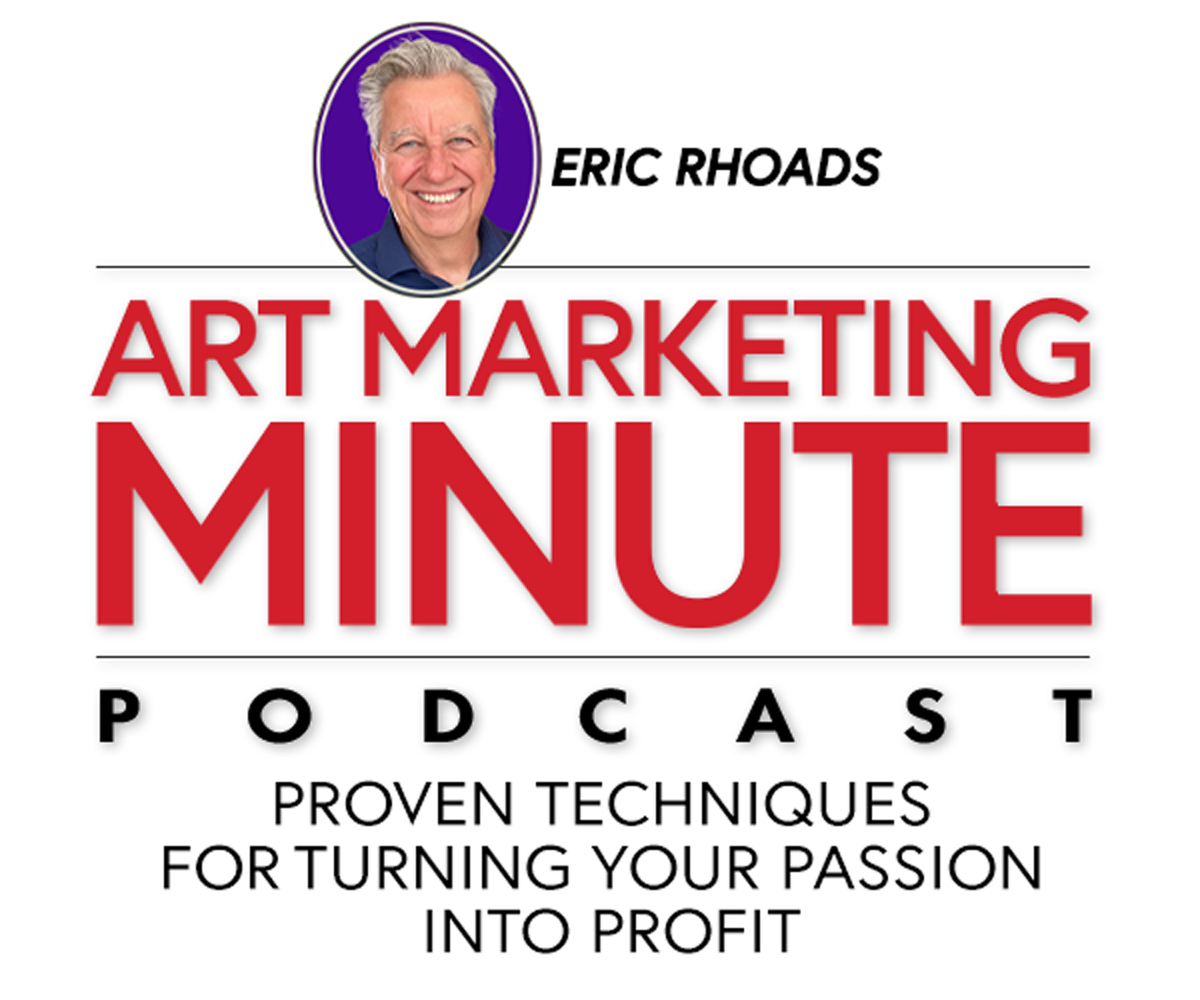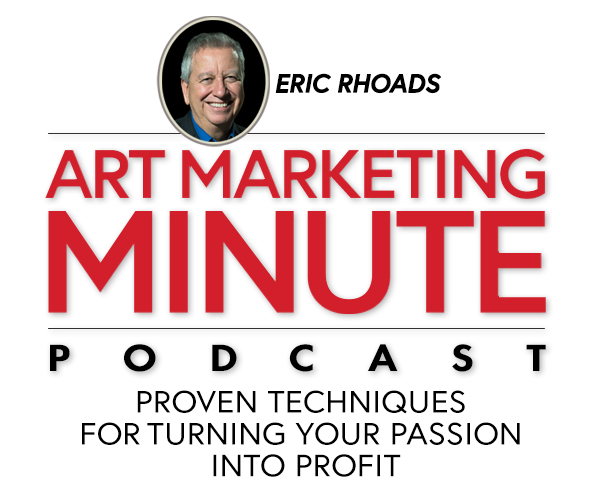Art Marketing Minute Podcast: Episode 36
In the Art Marketing Minute Podcast, you’ll learn how to sell your art, how to market your paintings, and everything else you need to know in order to have a successful art career. Each episode answers questions from artists by host Eric Rhoads, author of “Make More Money Selling Your Art,” publisher of several art magazines and newsletters, and author of ArtMarketing.com.
In this Art Marketing Minute, Eric Rhoads shares advice on the idea of setting out a tip jar while painting in public, and marketing tips for getting into fine art galleries.
Listen to the Art Marketing Minute Podcast: Episode 36 >>>
Submit Your Art Marketing Question:
What questions do you have about selling your art? Email Eric today at [email protected] (include your name and where you’re from) to hear your question answered on an upcoming Art Marketing Minute Podcast.
FULL TRANSCRIPT of the Art Marketing Minute:
DISCLAIMER: The following is the output of a transcription from an audio recording of the Art Marketing Minute. Although the transcription is mostly correct, in some cases it is slightly inaccurate due to the recording and/or software transcription.
Announcer 0:02
This is the Art Marketing Minute with Eric Rhoads, author of the Amazon best selling book, “Make More Money Selling Your Art.” In the marketing minute we answer your questions to help your art career brought to you by artmarketing.com, the place to go to learn more about marketing. Now, here’s your host, arts magazine publisher, Eric Rhoads.
Eric Rhoads:
Here’s an anonymous question from a listener and I don’t know the name. It came from social media. It says I paint outside a lot, and I get a lot of compliments. But I’m wondering if it would be okay to set out a hat, much like street musicians where it can collect tips. What do you think?
Well, I spent a lot of time in the direct marketing world and they have a saying, test everything. I think it’s well worth trying it and testing it. But keep in mind that if you encourage more viewing of your performance, then it might be disruptive. I test it though I put out a hat, throw some money in it to private so to speak, so that no one wants to be first, right? They want to see that social proof that somebody else has put money in. I’d also try a hat with a sign that says something like I make my living as an artist or I’m a starving artist, anything you can do to help any typical help and try it both ways and see which one works. I think it’s worth trying. Why not? And of course if you want to gather people around And have them watched that’s fine too. You could also put on your side you know paintings are available for sale and of course you could put some out that are for sale if you want to do that. There are really no rules. I think everything should be tried and tested if you’re comfortable with it, as long as it’s ethical.
Now the next question comes from Peter in New York, who says I’d appreciate listening. I appreciate listening to the podcast on YouTube, the as we put it there to any marketing tips for getting into fine art galleries would be interesting. Thank you.
Well, I’m happy to help Peter. We’ve talked about this a lot. We continue to, you might want to do a couple things. First off, listen to some other art marketing podcasts, and also our marketing minute podcast and also go to artmarketing.com where I’ve got a lot of articles and things about this, but the first thing is to put yourself in the shoes of the gallery. What is it they want? What are they trying to do? What do they need, what will make their job easier. They want artists who are going to sell and sell well Who are going to make money for them who don’t sit and take up valuable wall space without selling? So how can you prove to them you’re that artist. Next ask yourself what their life is like. My friend at a gallery in New York is annoyed by all the email and mail and packages he gets from artists soliciting him. Most of it goes in the trash without ever looking. Now he can find artists on his own and he can get referrals to artists. And this looking at all the emails and packages is a giant time suck. So he just doesn’t do it. He just ignores it. Now most artists don’t do their homework. He says that he doesn’t sell any modern or abstract paintings yet more than half of the artists who send in are sending in modern or abstract painting, so it’s just more of a waste of time. So do your homework. I have a whole volume on getting into galleries in my video series and I touch on it pretty heavily in my book, make more money selling your art, but the best thing to do is to get invited to not push yourself now sometimes you can but it can backfire. on YouTube, so somebody too pushy, somebody doesn’t want to deal with you. You need a strategy to get invited in and I go into depth on that in some of my videos. But the bottom line is how can you get them to invite you without ever calling them without ever emailing them? And without ever mailing them a bunch of stuff to make them aware of you ask yourself that question, how could I get them to invite me in? There’s actually a lot of ways Why don’t you sit down and write down six or seven or eight or 10 or 20 ways that get somebody to invite you in without calling, emailing or or mailing? Now if you can answer that question, you’re going to solve the problem. I’ll let you think about that.
Well, this has been the art marketing minute with me. Eric Rhoads. My goal in life is to eliminate the idea of the starving artists to help your dreams actually come true. So if you want to submit questions, simply email [email protected]. And to learn more about marketing ideas, you can visit Artmarketing.com. Thanks for listening.
Remember to Submit Your Question: What questions do you have about selling your art? Email Eric today at [email protected] (include your name and where you’re from) to hear your question answered on an upcoming Art Marketing Minute Podcast.


 Recently a well-meaning artist posted this statement on Facebook:
Recently a well-meaning artist posted this statement on Facebook: